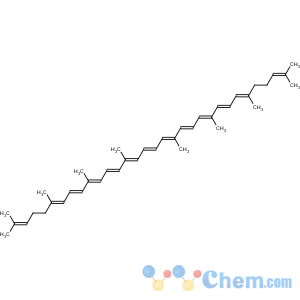Lycopene
-

Molecular Structure
Detailed Description
Lycopene
Synonyms: LYCOSOURCE;LYCOPENE;JARCOPENE(TM);4,4-CAROTENE;2,6,10,14,19,23,27,31-OCTAMETHYL-DOTRIACONTA-2,6,8,10,12,14,16,18,20,22,24,26,30-TRIDECAENE;PSI,PSI-CAROTENE;Y,Y-CAROTENE;E 160d
CAS: 502-65-8
MF: C40H56
MW: 536.87
EINECS: 207-949-1
Type: Tomato extract
Latin Name: Sulanum Lycopersicum L
Assay: 1%-10% Lycopene
Origin: China
Part: fruit
Appearance Red fine powder
Extract solvent Ethanol Or Water
Particle size 100% pass 80 mesh
Loss on Drying ≤ 5.0%
Bulk density 40-60g/100ml
Function:
1. A large consumption of tomato can help improve skin texture and color.
2. Tomato is a good blood purifier.
3. Tomato helps in cases of congestion of the liver (protects the liver from cirrhosis) as well as for dissolving gallstones.
4. Tomato is a natural antiseptic therefore it can help protect against infectionNicotinic acid in tomatoes can help to reduce blood cholesterol, thus helps prevent heart diseases.
5. Vitamin K in tomatoes helps to prevent hemorrhages.
6. Tomato contain lycopene (the red pigment in tomato), this pigment is a powerful antioxidant that can also fight cancer cells.
Application:
1) Applied in food field, it is mainly used as food additives for colorant and health care;
2) Applied in cosmetic field, it is mainly used to whitening, anti-wrinkle and UV protection;
3) Applied in pharmaceutical field, it is made into capsule to prevent cancer.

- Lycopene




